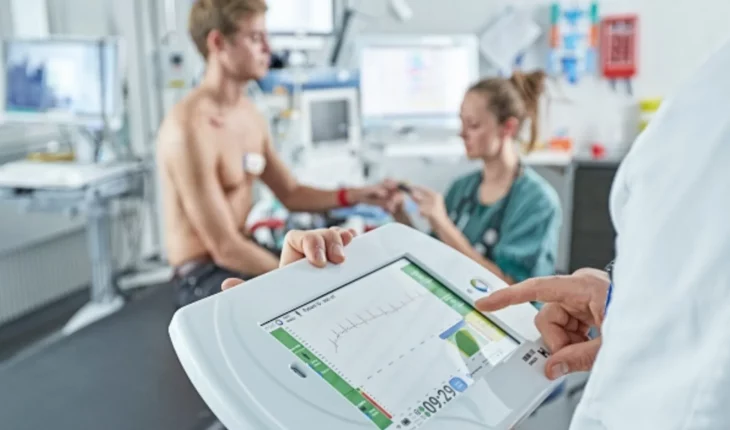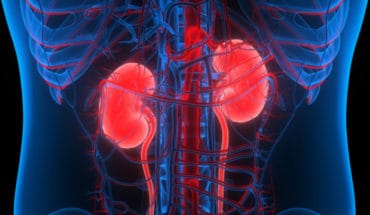Three clinical studies have concluded that a new and ground-breaking monitoring system using artificial intelligence and wireless technology to monitor patients can identify clinical deterioration earlier than currently used “manual and simplistic” methods.
Researchers from the WARD project (Wireless Assessment of Respiratory and circulatory Distress) at Rigshospitalet, Bispebjerg Hospital and the Technical University of Denmark, in Copenhagen, Denmark, are combining the Patient Status Engine (PSE) platform, with a first-of-its kind, clinical monitoring system (WARD 24/7), that continuously interprets vital sign patterns with AI to detect clinical deterioration without producing irrelevant alarms leading to alarm fatigue.
Nursing teams receive early notification of decline in a patient’s condition on their mobile equipment rather than on unattended bed side screens through an associated app developed together with the nurse teams.
Eske Kvanner Aasvang, professor and WARD co-inventor, said: “A staggering 30% of all patients in normal hospital wards experience unexpected critical complications such as pneumonia, sepsis and cardiac injury within the first month after major surgery. This leads to longer hospital stays and worse outcomes. It is in part because the monitoring of patients’ vital signs is performed manually by nurses a few times a day which is too infrequent and too simplistic to predict critical events.”
The WARD project initially used the Isansys PSE platform to develop the WARD 24/7 system by monitoring hundreds of patients and obtaining tens of thousands of hours of data to build the necessary data sets for mathematically and clinically modelled algorithms, ensuring a solid clinical evidence base for regulatory certification for this new artificial intelligence application.
The PSE is a CE marked, Class IIa and FDA cleared medical device that utilises advanced clinical body-worn sensors to continuously monitor high resolution vital signs including ECG, heart rate, respiration rate, heart rate variability, temperature, PPG, oxygen saturation, blood pressure and activity. The PSE integrates and feeds each patient’s data in real time to the WARD 24/7 central monitoring and analysis unit that makes up the ‘brain’ of the monitoring system. Patients in multiple hospitals can be monitored from a centralised analysis unit and monitored by mobile screens wherever the nurse is.
“This is a significant step forward in the automation, and subsequent efficiency gains, in healthcare,” added Eske.
Christian S. Meyhoff, associate research professor and WARD co-inventor, added: “These studies support our hypothesis that what we’re building will actually allow for timely intervention of patients’ deteriorations. We document large amounts of vital sign deviations that were not previously detected by clinical staff. Importantly, we can now also use raw data from thePSE to detect atrial fibrillation and alert for significant predictors of upcoming cardiac injury. We continue our clinical studies to prove that it will also improve hospitalised surgical and medical patients’ outcomes. This is an important step forward in patient safety.”
The long-term vision for Isansys and the WARD team is to transform the way patients are monitored in high dependency, step-down and general wards – and in the near future remotely from the patient’s own home.
Keith Errey, CEO of Isansys, said: “With this use of this monitoring system, we aim to eliminate unexpected critical events in the hospital, reduce hospital admissions and shorten hospital stays. This will decrease in-hospital mortality and morbidity at a substantially lower cost than current monitoring practice, as well as reduce stress among nurses and doctors and making patients feel safe. We’re delighted to see evidence for it now moving rapidly towards large-scale clinical adoption.”
The clinical papers published about the study include:
- Gut microbiome could delay onset of type 1 diabetes - 3rd April 2025
- The da Vinci 5 Robot Is Set To Transform Bariatric Care: - 31st March 2025
- Beyond money: the hidden drivers fuelling child food insecurity - 31st March 2025






